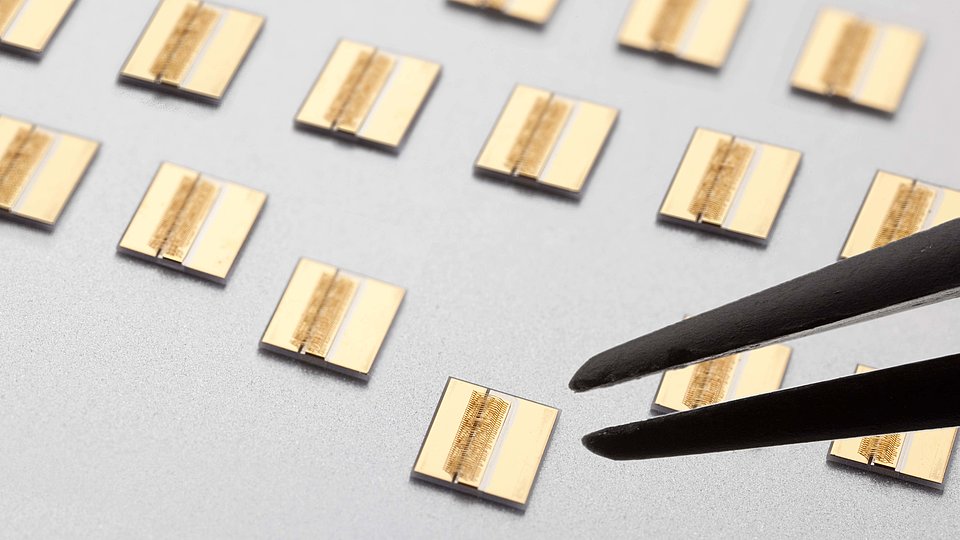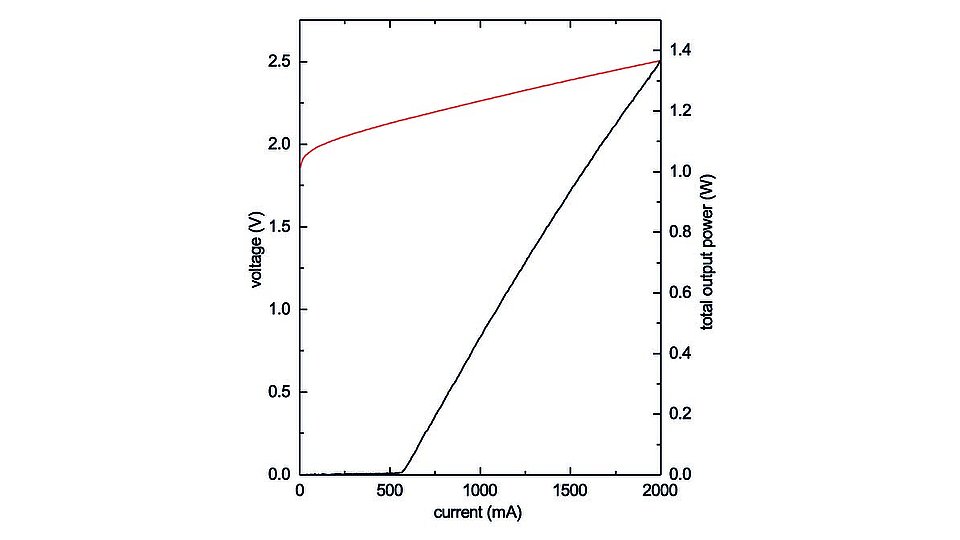Laser diodes emitting below 633 nm – targeting quantum photonics
The emerging field of quantum information processing has attracted the attention of both research and industry. Central to advances in this rapidly expanding area are laser sources. The wavelengths required for such quantum applications range from the infrared spectral region into the ultraviolet spectrum – many of which are provided by solid-state or fiber lasers and their higher harmonics. However, these laser sources do not cover the whole wavelength range needed, are rather complex, and cannot be significantly miniaturized. Semiconductor diode laser sources are thus particularly interesting due to their small form factor. Moreover, they can be mass-produced and their wavelength can be engineered. This makes diode lasers the most promising route for shrinking quantum information processing devices and making equipment like quantum computers accessible to the public.
A special focus is on red-emitting laser sources with wavelengths below 633 nm that are currently not commercially available. Examples of applications are qubits either based on trapped ions, molecules, or color centers in diamonds. Some wavelength examples used in qubits are 628 nm and 626 nm, targeting calcium fluoride (CaF2) and beryllium (9Be+) respectively. Tin ions in diamond for example require laser radiation at 619 nm. The target power levels of these application cases are either in the tens of milliwatts range or in the case of 626 nm radiation in the one-watt range.
Our approach at FBH is to extend the emission range of GaAs-based lasers from 633 nm down to the above-mentioned wavelengths of interest. First, we focused on developing epitaxial laser structures with a gain maximum at 626 nm. This allows us to fabricate seed lasers and amplifiers for master-oscillator power-amplifier setups and spectrally stabilized lasers. For this, we performed detailed theoretical investigations to find the best-fitting layer structure [1]. This structure was then grown by metal-organic chemical vapor phase epitaxy on three-inch-wide wafers. The final broad area lasers emitted under pulsed excitation having a total maximum power of close to 1.4 W at 625 nm, reaching peak efficiencies of approximately 30 %.
Based on these results, we fabricated ridge waveguide lasers. The spatial emission properties of these devices are excellent as they emit nearly diffraction-limited laser radiation up to an output power of 100 mW. Aging tests show a high reliability. The resulting lasers can be further tuned to even shorter wavelengths by cooling. For temperatures below the dew point, we utilize the industry-standard TO-3 housings with a waterless atmosphere and an internal Peltier element to achieve chip temperatures as low as -30° C. With this capability, laser radiation as short as 619 nm can be generated at ambient room temperature. This breakthrough lays the foundation for miniaturized lasers and portable quantum information processing systems.
Publications
[1] F. Mauerhoff, H. Wenzel, A. Maaßdorf, D. Martin, K. Paschke, G. Tränkle, "Optimization of high power AlGaInP laser diodes at 626 nm". Opt Quant Electron 56, 419, https://doi.org/10.1007/s11082-023-06028-5 (2024).
[2] F. Mauerhoff, O. Senel, H. Wenzel, A. Maaßdorf, J. Boschker, J. Glaab, K. Paschke, G. Tränkle, "High power AlGaInP laser diodes at 626 nm", Proc. SPIE PC12905, Novel In-Plane Semiconductor Lasers XXIII, PC1290503, https://doi.org/10.1117/12.3002216 (2024).

